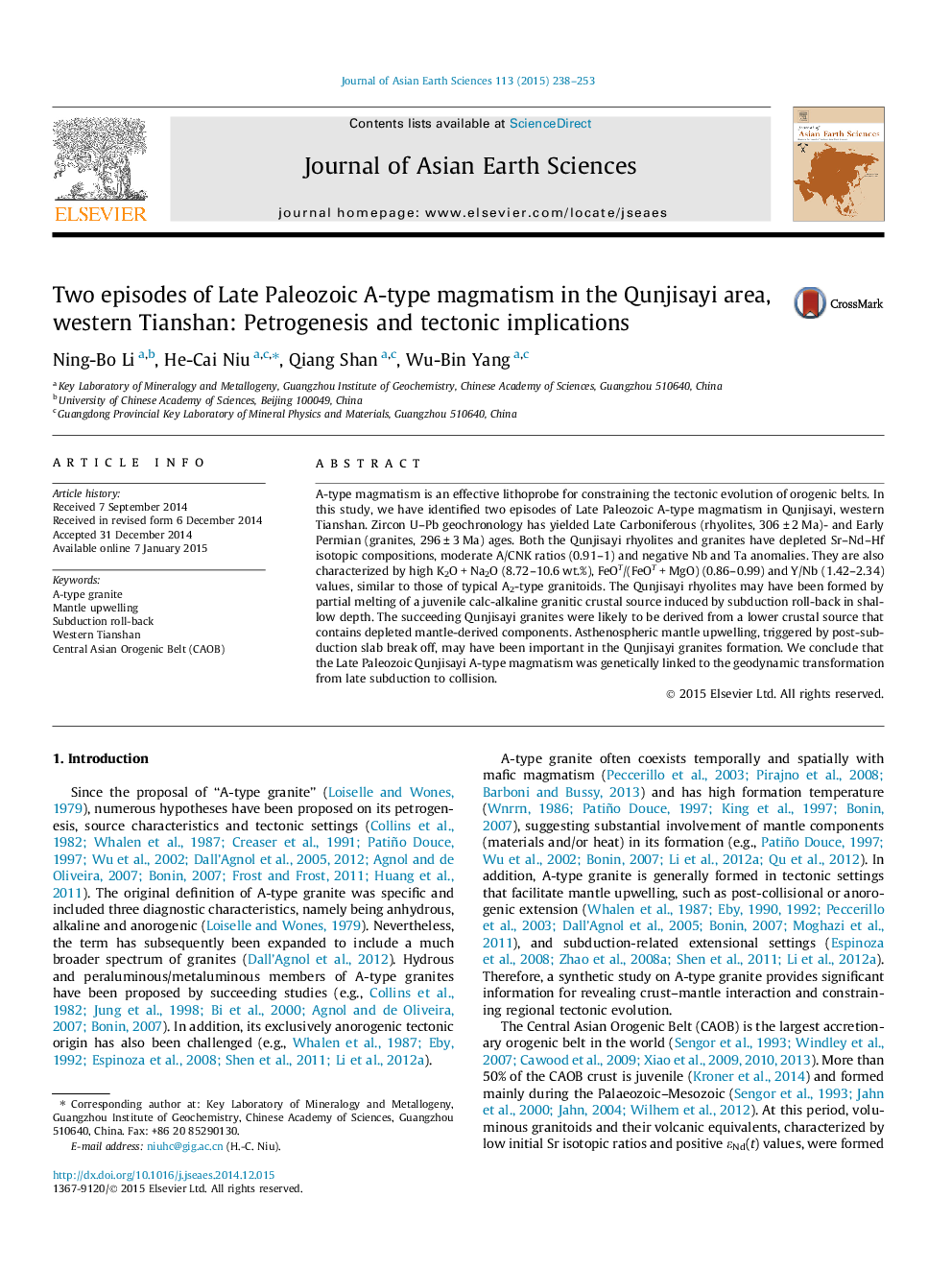| Article ID | Journal | Published Year | Pages | File Type |
|---|---|---|---|---|
| 4730225 | Journal of Asian Earth Sciences | 2015 | 16 Pages |
•The Qunjisayi rhyolites and granites were formed at 306 Ma and 296 Ma respectively.•The rhyolites were resulted from melting of granitic source at shallow depth.•The granites were derived from juvenile basaltic crustal source.•The geodynamic transformation of the western Tianshan occurred in Early Permian.
A-type magmatism is an effective lithoprobe for constraining the tectonic evolution of orogenic belts. In this study, we have identified two episodes of Late Paleozoic A-type magmatism in Qunjisayi, western Tianshan. Zircon U–Pb geochronology has yielded Late Carboniferous (rhyolites, 306 ± 2 Ma)- and Early Permian (granites, 296 ± 3 Ma) ages. Both the Qunjisayi rhyolites and granites have depleted Sr–Nd–Hf isotopic compositions, moderate A/CNK ratios (0.91–1) and negative Nb and Ta anomalies. They are also characterized by high K2O + Na2O (8.72–10.6 wt.%), FeOT/(FeOT + MgO) (0.86–0.99) and Y/Nb (1.42–2.34) values, similar to those of typical A2-type granitoids. The Qunjisayi rhyolites may have been formed by partial melting of a juvenile calc-alkaline granitic crustal source induced by subduction roll-back in shallow depth. The succeeding Qunjisayi granites were likely to be derived from a lower crustal source that contains depleted mantle-derived components. Asthenospheric mantle upwelling, triggered by post-subduction slab break off, may have been important in the Qunjisayi granites formation. We conclude that the Late Paleozoic Qunjisayi A-type magmatism was genetically linked to the geodynamic transformation from late subduction to collision.
